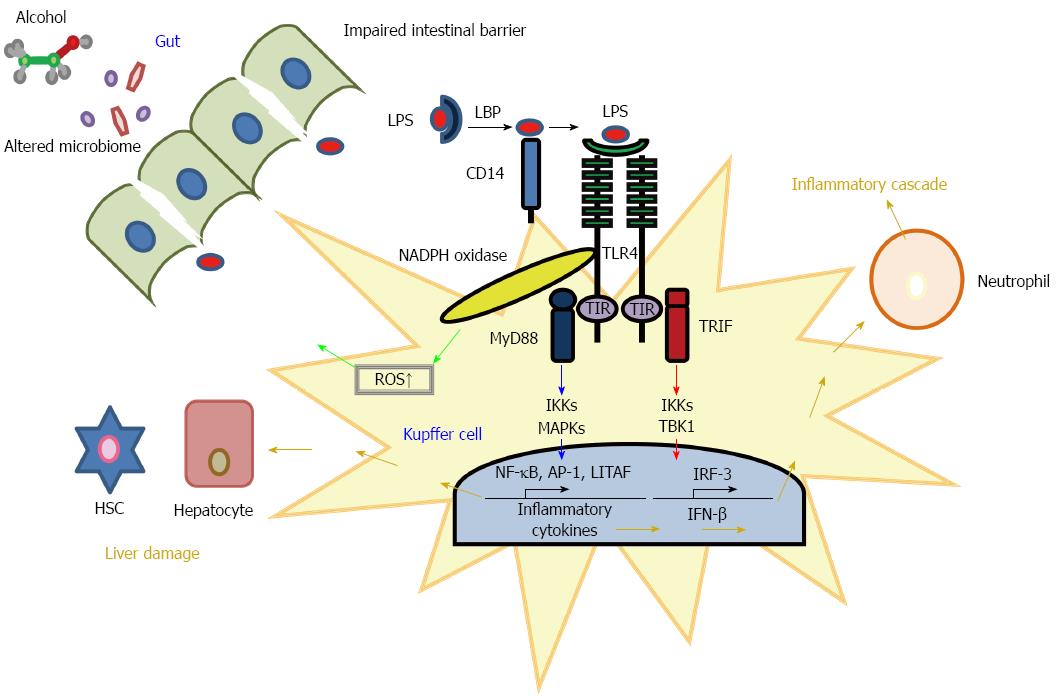Copyright
©2014 Baishideng Publishing Group Inc.
World J Gastroenterol. Nov 28, 2014; 20(44): 16443-16451
Published online Nov 28, 2014. doi: 10.3748/wjg.v20.i44.16443
Published online Nov 28, 2014. doi: 10.3748/wjg.v20.i44.16443
Figure 1 Schematic representation of lipopolysaccharide-mediated Toll-like receptor 4 signaling pathways.
The disruption of intestinal integrity (i.e. caused by alcohol) results in migration of gut-derived microbial products, particularly LPS, through the portal circulation reaching the liver. LPS can prime KC-dependent production and release of pro-inflammatory cytokines (as TNF-α and IL-1β), which in turn, lead to release of other pro-inflammatory cytokines and chemokines recruiting and activating immune cells, affecting HSC and hepatocyte homeostasis. In the figure, the LPS-TLR4 interaction and consequent initiation of downstream signaling cascade distinguishing both the MyD88-dependent and independent pathways in KCs and their interplay with other cells involved in liver inflammation and damage is summarized. LPS: Lipopolysaccharide; LBP: LPS-binding protein; KC: Kupffer cell; TNF: Tumor necrosis factor; IL: Interleukin; HSC: Hepatic stellate cell; TLR: Toll-like receptor; TIR: Toll/interleukin-1 receptor; TRIF: TIR-domain-containing adapter-inducing interferon-β; NF-κB: Nuclear factor-κB; IKK: IKB kinase; MAPKs: Mitogen-activated protein kinases; LITAF: LPS-induced TNF-α factor; IFN: Interferon; ROS: Reactive oxygen species.
- Citation: Ceccarelli S, Nobili V, Alisi A. Toll-like receptor-mediated signaling cascade as a regulator of the inflammation network during alcoholic liver disease. World J Gastroenterol 2014; 20(44): 16443-16451
- URL: https://www.wjgnet.com/1007-9327/full/v20/i44/16443.htm
- DOI: https://dx.doi.org/10.3748/wjg.v20.i44.16443









